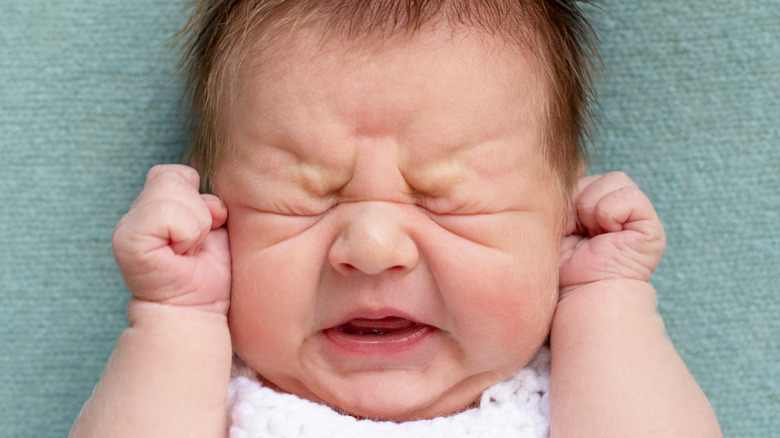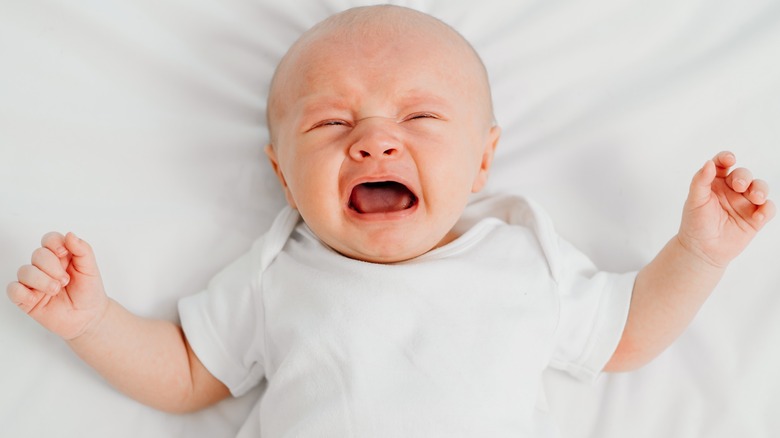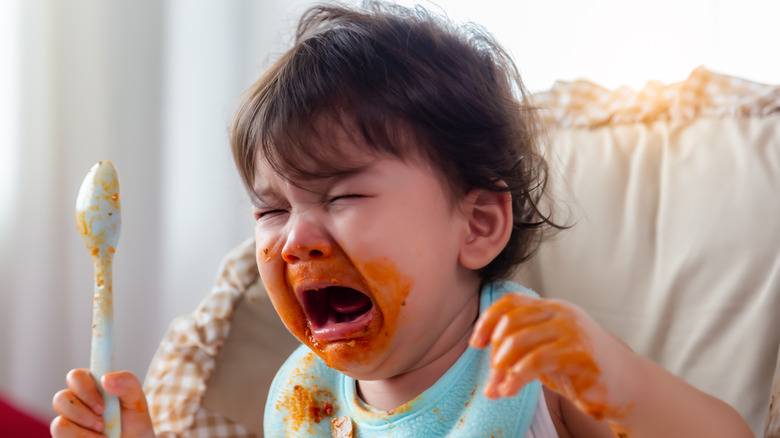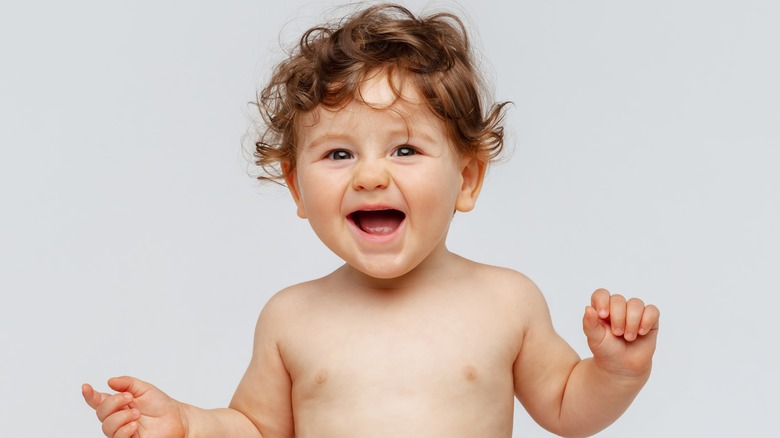How They Make Babies Cry In Movies
For movies that feature a character who is a baby, it's sometimes possible to use a doll wrapped in a blanket. However, if a baby's face is needed in a certain scene, it becomes necessary to hire a baby actor. Babies are only legally allowed to be on set for 2–6 hours per day, so it's not productive to just wait around until the baby starts behaving the way the scene necessitates, but it's also difficult to control their behavior. Because they cannot understand or respond to directions the way other actors can, special tricks are needed to get movie babies to act the way their characters are supposed to.
For example, sometimes a baby may need to be crying in a scene. Crying on cue is difficult enough for adult actors, who use various tricks to help them fake cry in movies, but babies aren't even aware that they're acting let alone capable of developing ways to make themselves cry on cue. Instead, special adults in the film crew called baby wranglers are responsible for getting babies to cry (or stop crying) for different scenes.
Baby wranglers cry to get movie babies to cry
Hundreds of different people are needed just to make one movie, from actors, directors, and screenwriters to costume designers, makeup artists, camera operators, and more. One of the extra roles required when there are babies in a movie is a baby wrangler. According to the New York Times, this person is responsible for getting babies and young children to react appropriately to the camera while also making sure their needs are met. Baby wranglers are almost like baby whisperers, or mediums between the babies and the production team. And while they're not necessarily baby experts, they develop a close bond with movie babies by spending a lot of time with them, which makes it easier for baby wranglers to get responses out of babies than it is for most other adults on set.
In an interview with Insider, baby wrangler Elaine Hall explained that the best trick to get babies to start crying is for the wrangler to start crying themselves. The baby wrangler will make a "Wahhhh!" sound, and the baby will start to cry. This is an empathetic response, similar to how babies will start crying when they hear another baby crying. Apparently, the success rate of this strategy is 100%, and the effect is pretty instantaneous.
Perhaps the best thing about this method is that it does not cause any actual harm to the baby. Although the tears produced are real, the baby has not been hurt or harmed — they are simply reacting to an emotion displayed by another person.
Other methods used to get movie babies to cry are more problematic
Technically, there are nearly endless ways to get a baby to cry on cue, but most of these methods would cause pain, discomfort, or harm to the baby, which is not the goal of filmmakers. Rather, they want to produce the tears needed for the scene while also protecting the baby from harm. Babies usually cry in real life when they are hungry, cold, in pain, or in need of a diaper change. However, inflicting these conditions on babies would be cruel, so filmmakers never hurt or freeze babies, nor do they withhold food or diaper changes.
However, according to baby wrangler Elaine Hall, there are a few questionable methods of getting babies to cry that are still used by some baby wranglers today (via Insider). Some will place a bad smell in front of the baby in an attempt to get them to cry in disgust, while others will make some sort of loud, startling noise in an attempt to frighten them into crying.
Although neither of these methods is likely to cause any serious, lasting harm to movie babies, they still cause small amounts of unnecessary harm or distress, so they are not recommended. Furthermore, these methods may not have a 100% success rate of getting babies to cry, and when they do get babies to cry, it might take longer to get them to stop crying when the scene is over.
Baby wranglers also get movie babies to stop crying
In addition to getting babies to cry on cue, baby wranglers are also responsible for getting babies to stop crying quickly in order to make the most of their limited amount of time on set. According to baby wrangler Elaine Hall, if a baby starts crying in response to the wrangler crying, it's pretty easy to get them to stop simply by reassuring them that everything is now okay (via Insider). If the baby does not stop crying when the wrangler stops, however, or if they're crying for a different reason, wranglers can soothe or comfort the baby using rattles and bells.
Sometimes, you don't want a baby to cry at all but to smile. In this case, wranglers will dance, sing, and make motions behind the camera (via The New York Times). And to prevent babies from crying when they are plopped into a random stranger's lap, a good baby wrangler like Hall will have the actor who is interacting with the baby on camera spend time with them beforehand so that the baby gets used to them.



